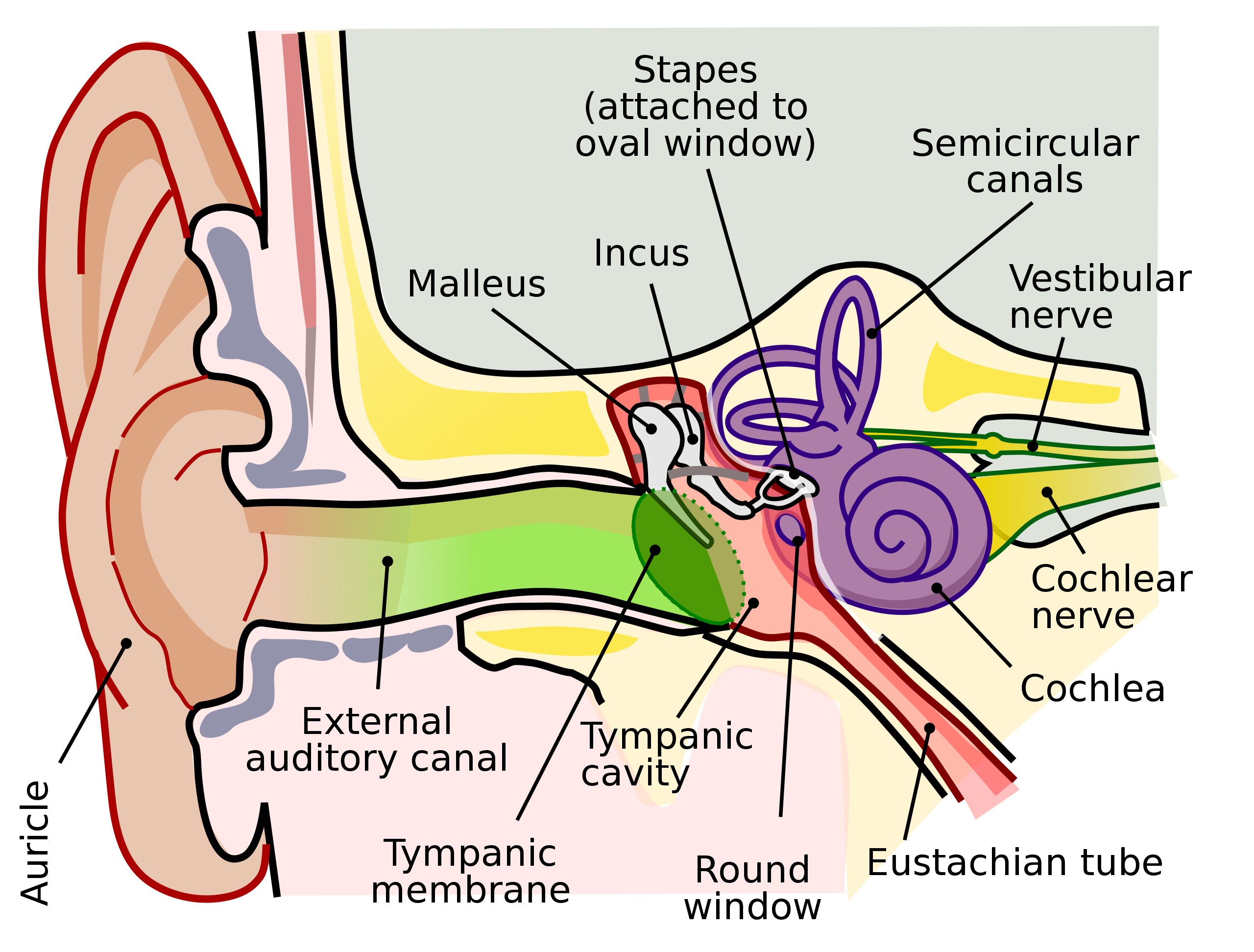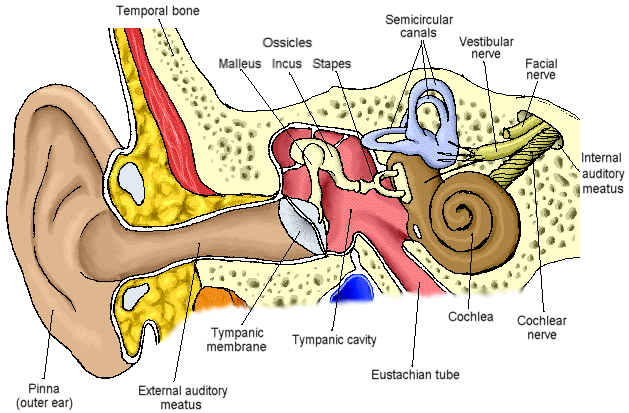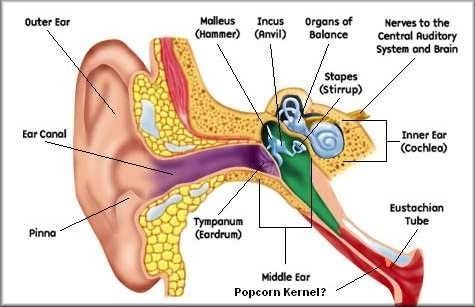Detail about Ear
ear, Organ of hearing and balance. The outer ear directs sound vibrations through the auditory canal to the eardrum, which is stretched across the end of the auditory canal and which transmits sound vibrations to the middle ear. There a chain of three tiny bones conducts the vibrations to the inner ear. Fluid inside the cochlea of the inner ear stimulates sensory hairs; these in turn initiate the nerve impulses that travel along the auditory nerve to the brain. The inner ear is also an organ of balance: the sensation of dizziness that is felt after spinning is caused when fluid inside the inner ear’s semicircular canals continues to move and stimulate sensory hairs after the body has come to rest. The eustachian tube connects the middle ear with the nasal passages; that connection allows the common cold to spread from the nasal passages to the middle ear, especially in infants and small children. The most common cause of hearing loss is otosclerosis, a surgically correctable disease in which one of the bones of the middle ear loses its capacity to vibrate. See also deafness, otitis.


